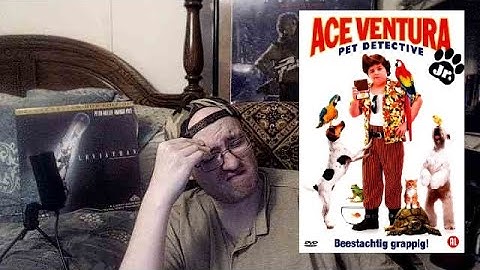Fortunately for me, the pandemic has not interfered with my life-long hobby: video games. I finally got around to playing What Remains of Edith Finch, a game that received high praise for its short but engrossing Lovecraftian-esque narrative. What I experienced was a surprisingly insightful exploration of humanity’s relationship with death. Coincidentally, I had just read BJ Miller’s opinion piece “What is Death?” in The New York Times and was struck by the parallels between it and What Remains. This game illustrates how one may “fold death into our lives,” and what can happen when we refuse to do so. As Dr. Miller says, “We really have only two choices: to share life with death or to be robbed by death.” What Remains doubles down on this sentiment by turning tragedy on its head and daring us to find beauty in every story (or video game), no matter how short. What Remains centers on a young woman named Edith Finch who returns to her childhood home following the death of her mother. Now the last member of her family, Edith is searching for an explanation for the infamous Finch Family Curse. For reasons unknown, the tragedy of untimely death has stalked the Finch family for countless generations.  Over the course of the game, you explore the rooms of her deceased relatives in order to make sense of her family’s misfortune. Browsing journals and photographs of Edith’s deceased relatives momentarily transports you to the moment before each person’s death, allowing you to temporarily see the world through their eyes. A warning: these scenes are brief but intense and include death by suicide. While you do gain information about the circumstances of each family member’s death, many questions are left unanswered. What I found more captivating than the mystery of the curse was the variety of ways the family copes with terrible loss. The game places particular focus on the narratives of Edith’s mother, Dawn, and Edith’s great-grandmother, Edie. Edie, now in her 90s, has lived in the family home since she and her late husband built it 80 years prior. Over the years she has lost her husband, five children, two grandchildren, and two great-grandchildren within the home. Instead of turning away from this massive heartache, Edie preserves each room as a memorial to celebrate the person that lived inside it. She refuses to repurpose these rooms for new family members, and instead tacks on new rooms to the house whenever needed. As a result, the house takes on a haphazard, other-worldly appearance as if it were a living organism.  Dawn, on the other hand, is terrified of her family’s past and eager to conceal it from her children. Rather than discuss death with her children, she seals off the memorialized rooms and refuses to talk about their relatives. However, as Dawn finds out and as we in palliative care know, it is impossible to insulate loved ones from loss forever. When Dawn dies, Edith is left to uncover her family’s history – and navigate the pain associated with what she finds – entirely on her own. So often in palliative and hospice care we bemoan our culture’s aversion to the topic of death and dying. Experiencing What Remains and reading its overwhelmingly positive reviews gives me hope that the aversion may not be as strong as we think. On the contrary, it would seem there is a hunger to explore the existential in more ways than we realized -- even if some are slightly unconventional.  “If we lived forever, maybe we'd have time to understand things. But as it is, I think the best we can do is try to open our eyes. And appreciate how strange and brief all of this is.” --Edith Finch What Remains of Edith Finch? is available to play on PlayStation, Xbox, and Windows (via Steam). For more Pallimed posts on video games, click here. For more Pallimed posts by Dr. Tyler click here. Matt Tyler is a palliative care doctor in Chicago. If he's not watching Cocomelon with his daughters, he is probably playing video games or making palliative care skits on TikTok. One of the main elements characterizing the Gothic genre is the ghostly presence of the past, which returns to haunt the characters and remind them of the things they want to forget. The setting in What Remains of Edith Finch is a house built on memories, which hides the key to understanding a curse that plagues the protagonist’s family. What Remains of Edith Finch presents an excellent gothic narrative, with a melancholic atmosphere that is full of loss and doubt, and stories that impress both because of their tragic outcomes and by the unique way in which they are presented. The player controls the young Edith Finch in the first-person, observing the world through her eyes while reading the words of her diary hovering over the environment. When her mother dies, Edith discovers that a mysterious key has been left to her as inheritance, and so, being the last descendant of the Finch family, she feels the need to dig up the family history and go back to her childhood home. The Finch house is a character of its own. From afar, centered in a marshy landscape, it seems twisted, with strange addendums that form a crooked tower, which barely seems to be holding itself in place. Inside, it is ostentatious, containing several floors and rooms packed with piles of books, photographs, tickets, and diaries that, taking a good part of the space, give the house a claustrophobic feeling. It’s a true Gothic mansion, labyrinthine and full of secret passages, hiding a mysterious past. Its interior, long abandoned, reflects the decadence of the Finch family, which, contrary to genre tropes, is not aristocratic, but bourgeois. Its way of living, however, used to match that of the aristocracy, and the place’s architecture directly emulates the great Victorian houses. At the very beginning of the game, Edith herself states which feeling that place instills in her: fear. While exploring the house, which contains plenty of eccentricities, Edith also delves deep into the memories of those who lived there. The logic behind the design of the house is one of accumulation: the new Finch generations were not placed in old rooms, replacing their ascendants, but in new rooms built exclusively for them: this makes the house grow with each passing generation, refusing to forget those that lived there. The words of Edith’s diary assume a very important role in the game, appearing in the middle of the house’s innumerable objects – sometimes glued to the walls, sometimes floating above some suspicious article: the words serve as a form of narration, contextualizing those objects, but also as a guide for the player, pointing at what is important in the room. Death is the main antagonist in What Remains of Edith Finch and also the obsession of its characters. As Edith points out during one scene, the first thing that was built on her family’s land was a cemetery. If some members of the Finch family get to the point of turning death into a monster, depicting it as a creature lurking in the shadows, almost everyone at least considers it a horrible curse. The rooms of those who have already departed remain intact in the house as a form of protest: it’s a way of denying death the complete obliteration of its victims, making the whole house a symbol of resistance. Therefore, it is extremely appropriate that the main action in the game is the act of reliving memories, momentarily resurrecting each member of the Finch family while you are reading their diaries, cards, and confessions. In these scenes, the player leaves Edith and starts to control the character from the memory in question, reliving their last moments. These stories, then, assume a paradoxical role, representing a small victory over death at the same time that function as a reminder that is precisely death what awaits each of them in the end. The unique construction of these stories is another element that makes the game stand out, sometimes reflecting the fantastical imagination of the characters and reinforcing their conflicts, sometimes operating ironically to confer a bit of dark humor to their tragedies. By controlling the little Molly, for example, the player enters the fantasy mind of the character, following her transformation into several animals as she travels around the house in search of something to satisfy her hunger. In another brilliant moment, the player embodies a young man frustrated with his work in a canning factory. The screen is divided into two parts, requiring the player to perform the mechanical act of cutting fish with one part of the controller, while, with the other, they are diving into the young man’s imaginary adventures. As the adventure section gradually gains prominence on the screen, taking the space from the job in the canning factory, the story mirrors the character’s disconnection from reality, making the player assist him in his escape. In this part, even the attention to detail is impressive. The intrusion of fish imagery in several parts of the fantastical scenery, appearing as relief paintings on the walls of a palace, for example, works as an uncomfortable reminder of his reality. Meanwhile, the absence of real faces on the characters that appear sympathetic to the young man reinforces his loneliness. The absence of Edith’s presence in his imagination is also poignant in a way, as even the character’s cat appears to congratulate him in a certain scene, but his own family is never there. The death of a young actress, on the other hand, is told in a more comic way, assuming a comic book aesthetic – and the humor comes mainly from the sadism of the narration, which puts getting her to scream in horror as the ultimate goal and proceeds to subvert players expectations by delaying this scream. The prose in What Remains of Edith Finch also deserves special mention. It reveals surprising details about each one of the Finch family members in a subtle way. The little Molly, for example, especially because of her age, is giving a sinister quality thanks to her comments that display hints of cruelty (“I imagined his face looking up and seeing mine through my talons,” she morbidly says after grabbing an animal to eat) and the jubilation she feels in killing animals that are also “mothers” (“A momma rabbit!” she cheers while she is hunting it). The story’s main conflict revolves around a dispute between Edith’s grandmother and her mother. The former, an old woman called Eddie, is the great architect of the myth surrounding the place, telling her fantastic stories and always acting superstitious, which, in a few instances, can be cruel: a boy was forced to continue living in the same room he shared with his dead brother, for example, gaining from Eddie only a rope to separate his side of the room, which possibly made the event even more traumatic. Edith’s mother, on the other hand, refuses this ghostly aspect of the family, but still ends up contributing a lot to it with certain symbolic gestures. While Eddie builds the haunting atmosphere of that house, reinforcing the impact of death, Edith’s mother abandons it, running away from death: while one turns it into a monster, the other refuses to talk about it. The game’s climax, therefore, is right to focus precisely on this clash, ending with an interesting thematic subversion, which blends optimism and pessimism to the same extent: it presents life and death at the same time. What Remains of Edith Finch works with the Gothic genre in an exemplary way, using its classic elements to problematize the theme of death. It’s a complex game both in terms of thematic discussion and presentation, making them work together to tell a memorable and tragic story. |





















